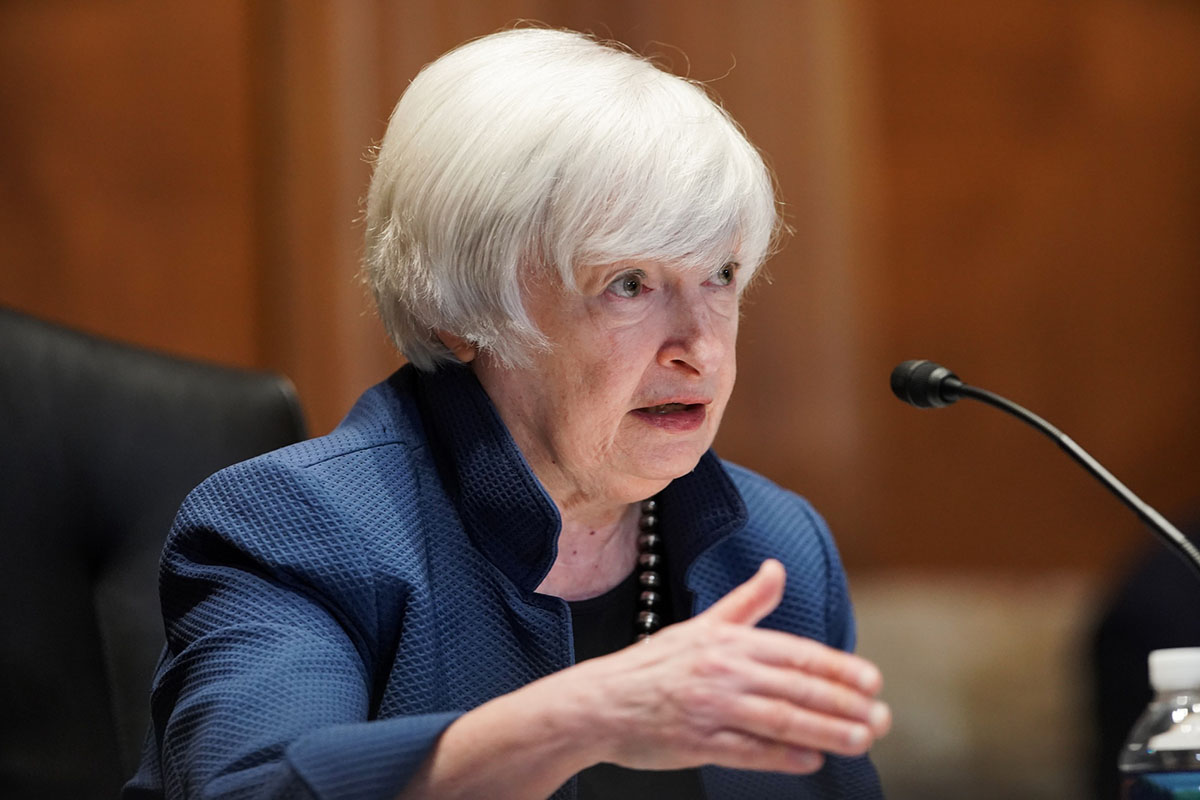Home>Finance>How Does High-Frequency Trading Improve Market Liquidity?


Finance
How Does High-Frequency Trading Improve Market Liquidity?
Published: February 23, 2024
Discover how high-frequency trading enhances market liquidity and its impact on finance. Explore the benefits and implications of this trading strategy.
(Many of the links in this article redirect to a specific reviewed product. Your purchase of these products through affiliate links helps to generate commission for LiveWell, at no extra cost. Learn more)
Table of Contents
Introduction
High-frequency trading (HFT) has become a prominent feature of modern financial markets, revolutionizing the speed and efficiency of trading activities. In essence, HFT involves the use of sophisticated algorithms and powerful computing technology to execute a large number of transactions within incredibly short timeframes, often in microseconds or milliseconds. This rapid pace of trading has significantly transformed the dynamics of market liquidity, impacting the ease with which assets can be bought or sold without causing a substantial change in their price.
In recent years, the prevalence of high-frequency trading has sparked intense debates and discussions within the financial industry and among policymakers. Proponents argue that HFT plays a vital role in enhancing market liquidity, thereby contributing to more efficient and resilient financial markets. On the other hand, critics raise concerns about the potential risks and negative implications associated with this form of trading, highlighting the need for comprehensive regulation and oversight.
This article aims to explore the intricate relationship between high-frequency trading and market liquidity, shedding light on the mechanisms through which HFT influences the accessibility and stability of financial markets. By delving into the impact of HFT on market liquidity, as well as the factors contributing to its perceived benefits and drawbacks, we can gain a deeper understanding of the multifaceted nature of this phenomenon. Furthermore, by examining the criticisms and concerns surrounding high-frequency trading, we can evaluate the broader implications of its proliferation and contemplate potential avenues for mitigating associated risks.
As we embark on this exploration, it is essential to recognize the complex interplay between technological advancements, regulatory frameworks, and market dynamics in shaping the landscape of high-frequency trading and its effects on market liquidity. By unraveling these intricacies, we can navigate the evolving terrain of financial markets with greater insight and discernment, fostering a more informed perspective on the role of high-frequency trading in driving liquidity and market efficiency.
Understanding High-Frequency Trading
High-frequency trading (HFT) encompasses a set of sophisticated trading strategies that leverage advanced technology to execute a large volume of trades at exceptionally high speeds. At the core of HFT are complex algorithms designed to analyze market data and identify fleeting opportunities for profit within fractions of a second. This rapid-fire approach to trading is made possible by cutting-edge hardware and ultra-low-latency connectivity, enabling HFT firms to capitalize on minute price differentials across various financial instruments.
One of the defining characteristics of high-frequency trading is its emphasis on speed and precision. HFT firms invest heavily in state-of-the-art infrastructure, including co-location facilities situated in close proximity to major exchanges, to minimize latency and gain a competitive edge in executing trades. Furthermore, the use of direct market access (DMA) and colocation services allows HFT participants to swiftly interact with trading venues, swiftly placing and canceling orders to capitalize on fleeting market conditions.
It is important to note that high-frequency trading encompasses a diverse array of strategies, ranging from market making and arbitrage to statistical arbitrage and trend following. Market makers, for instance, play a pivotal role in HFT by continuously providing buy and sell quotes for specific securities, thereby enhancing market liquidity and narrowing bid-ask spreads. Arbitrage strategies, on the other hand, exploit price differentials between related assets or across different exchanges, aiming to capture small, fleeting profits with minimal risk exposure.
While high-frequency trading has garnered attention for its lightning-fast pace and technological prowess, it is crucial to recognize the complexities and risks associated with this form of trading. The rapid-fire nature of HFT has raised concerns about market stability, as evidenced by instances of sudden and severe price fluctuations triggered by algorithmic trading. Moreover, the sheer speed at which HFT operates can potentially exacerbate market volatility and systemic risks, prompting calls for robust risk management and regulatory safeguards.
By gaining a deeper understanding of the underlying mechanics and strategies employed in high-frequency trading, we can appreciate the transformative impact of HFT on market dynamics and liquidity. This insight lays the foundation for exploring the intricate interplay between high-frequency trading and market liquidity, unraveling the implications of HFT’s lightning-fast transactions on the accessibility and resilience of financial markets.
The Impact of High-Frequency Trading on Market Liquidity
High-frequency trading (HFT) exerts a profound influence on market liquidity, reshaping the dynamics of buying and selling activities in financial markets. By leveraging cutting-edge technology and rapid execution capabilities, HFT firms contribute to the enhancement of market liquidity through several key mechanisms.
1. Increased Trading Volume: HFT’s lightning-fast transactions significantly amplify the overall trading volume in financial markets. This surge in trading activity fosters a more liquid environment by ensuring a continuous flow of buy and sell orders, thereby facilitating smoother and more efficient market operations. The heightened trading volume driven by HFT enhances the ease with which market participants can execute trades, bolstering overall liquidity and reducing the impact of large orders on prices.
2. Tighter Bid-Ask Spreads: High-frequency trading plays a pivotal role in narrowing bid-ask spreads, the difference between the prices at which buyers are willing to purchase a security and the prices at which sellers are willing to sell. By swiftly adjusting quotes and rapidly responding to market developments, HFT firms contribute to tighter bid-ask spreads, making it more cost-effective for investors to buy and sell securities. This reduction in spreads enhances market liquidity, as narrower spreads translate to lower transaction costs and improved price discovery.
3. Enhanced Price Efficiency: The rapid information processing and execution capabilities of HFT foster greater price efficiency within financial markets. By swiftly incorporating new information into asset prices and promptly adjusting their trading positions, HFT participants contribute to the efficient assimilation of market-relevant data. This, in turn, promotes price discovery and ensures that asset prices accurately reflect available information, bolstering market liquidity and reducing the likelihood of price distortions.
While high-frequency trading yields notable benefits in terms of market liquidity, it is essential to acknowledge the potential trade-offs and complexities associated with HFT’s impact. The lightning-fast nature of HFT transactions has raised concerns about the potential for market manipulation and abrupt price volatility, underscoring the need for robust regulatory oversight and risk management measures to safeguard market integrity and stability.
By delving into the multifaceted impact of high-frequency trading on market liquidity, we can discern the intricate ways in which HFT shapes the accessibility and resilience of financial markets. This exploration sets the stage for a comprehensive understanding of the factors contributing to improved market liquidity, shedding light on the interplay between HFT, liquidity dynamics, and the broader functioning of modern financial ecosystems.
Factors Contributing to Improved Market Liquidity
The enhanced market liquidity facilitated by high-frequency trading (HFT) stems from a confluence of factors that collectively amplify the accessibility and efficiency of financial markets. By delving into the key drivers underpinning improved market liquidity, we can unravel the intricate mechanisms through which HFT fosters a more liquid and resilient trading environment.
1. Speed and Efficiency: High-frequency trading’s unparalleled speed and efficiency are pivotal contributors to improved market liquidity. The rapid execution of buy and sell orders enables HFT participants to swiftly respond to market developments, ensuring a continuous and dynamic flow of trading activity. This heightened pace of trading enhances market liquidity by minimizing the time it takes to execute transactions, thereby reducing the potential for order congestion and facilitating seamless interactions between buyers and sellers.
2. Enhanced Price Discovery: HFT’s rapid information processing capabilities play a crucial role in promoting enhanced price discovery within financial markets. By swiftly incorporating new information into asset prices and promptly adjusting trading positions in response to market developments, HFT firms contribute to the efficient assimilation of market-relevant data. This fosters greater transparency and accuracy in asset pricing, bolstering market liquidity and reducing the likelihood of price distortions.
3. Narrower Bid-Ask Spreads: High-frequency trading’s role in narrowing bid-ask spreads significantly enhances market liquidity. HFT firms leverage their rapid execution capabilities and real-time market insights to adjust quotes swiftly, thereby reducing the spread between buying and selling prices. This reduction in spreads translates to lower transaction costs for investors, making it more cost-effective to buy and sell securities and ultimately fostering a more liquid trading environment.
4. Continuous Market Making: Market making, a core strategy employed by HFT firms, contributes to improved market liquidity by ensuring a continuous provision of buy and sell quotes for specific securities. By actively participating in the market and offering liquidity through consistent quoting activities, HFT market makers bolster the depth and resilience of financial markets, enhancing the ease with which assets can be bought or sold without significantly impacting their prices.
While these factors collectively bolster market liquidity, it is imperative to recognize the nuanced interplay between HFT, liquidity dynamics, and broader market functioning. The multifaceted impact of high-frequency trading on market liquidity underscores the need for a comprehensive understanding of the intricate mechanisms and trade-offs associated with HFT’s influence on the accessibility and resilience of financial markets.
By unraveling the factors contributing to improved market liquidity in the context of high-frequency trading, we can gain a deeper appreciation for the transformative role of HFT in shaping the liquidity landscape and driving market efficiency. This exploration sets the stage for a nuanced evaluation of the broader implications of HFT’s impact on market liquidity, fostering a more informed perspective on the evolving dynamics of modern financial ecosystems.
Criticisms and Concerns Surrounding High-Frequency Trading
While high-frequency trading (HFT) has garnered attention for its transformative impact on market liquidity, it has also sparked a range of criticisms and concerns, prompting scrutiny of its implications for market integrity and stability. By examining the notable criticisms and potential risks associated with HFT, we can gain a comprehensive understanding of the nuanced challenges and complexities surrounding this form of trading.
1. Market Instability: One of the primary concerns surrounding high-frequency trading is its potential to exacerbate market instability. The lightning-fast pace of HFT transactions can contribute to abrupt and severe price fluctuations, amplifying market volatility and heightening the risk of disruptive events. Instances of flash crashes and rapid price swings linked to algorithmic trading have underscored the need to address the potential destabilizing effects of HFT on financial markets.
2. Unequal Access to Market Data and Infrastructure: Critics of HFT raise concerns about the unequal access to market data and infrastructure, highlighting the advantage enjoyed by HFT firms with substantial resources to invest in cutting-edge technology and co-location services. This asymmetry in access can potentially create disparities in market participation and undermine the level playing field for all market participants, raising questions about fairness and market transparency.
3. Potential for Market Manipulation: The rapid and automated nature of high-frequency trading has raised apprehensions about the potential for market manipulation. Critics argue that HFT strategies, particularly those involving quote stuffing and order book spoofing, can distort market conditions and exploit inefficiencies, posing challenges to market integrity and investor confidence.
4. Systemic Risk Implications: The proliferation of high-frequency trading has prompted discussions about its systemic risk implications. The interconnectedness of HFT participants and the potential for rapid contagion of market shocks have fueled concerns about the systemic risks associated with HFT, necessitating robust risk management frameworks and regulatory safeguards to mitigate the likelihood of cascading disruptions.
5. Regulatory and Oversight Challenges: The dynamic and complex nature of high-frequency trading presents regulatory and oversight challenges, as traditional frameworks may struggle to keep pace with the rapid evolution of HFT strategies and technologies. Ensuring effective oversight and risk mitigation in the realm of HFT requires adaptive regulatory approaches and collaborative efforts to address the intricacies of algorithmic trading and its impact on market dynamics.
By acknowledging these criticisms and concerns, we can navigate the complexities of high-frequency trading with a nuanced understanding of its potential risks and implications. This critical evaluation sets the stage for contemplating potential avenues for addressing the challenges associated with HFT, fostering a more balanced and informed perspective on the evolving landscape of algorithmic trading and its impact on financial markets.
Conclusion
High-frequency trading (HFT) stands as a transformative force in modern financial markets, reshaping the dynamics of market liquidity and trading efficiency. The rapid-fire nature of HFT, propelled by advanced algorithms and cutting-edge technology, has yielded notable impacts on market accessibility, price dynamics, and overall liquidity. By amplifying trading volumes, narrowing bid-ask spreads, and fostering enhanced price efficiency, HFT has contributed to a more liquid and resilient trading environment, offering benefits in terms of transactional efficiency and price discovery.
However, the proliferation of high-frequency trading has also prompted a spectrum of criticisms and concerns, ranging from potential market instability and unequal access to market data to systemic risk implications and regulatory challenges. The lightning-fast pace of HFT transactions has raised apprehensions about its potential to exacerbate market volatility and distort market conditions, necessitating a comprehensive evaluation of its implications for market integrity and stability. Addressing the criticisms and risks associated with HFT requires a nuanced understanding of its multifaceted impact, underpinning the importance of adaptive regulatory frameworks and robust risk management measures to navigate the evolving landscape of algorithmic trading.
As we contemplate the intricate interplay between high-frequency trading and market liquidity, it becomes evident that a balanced perspective is essential for navigating the complexities and trade-offs inherent in HFT’s influence on financial markets. By recognizing the transformative potential of HFT in enhancing liquidity while acknowledging the challenges and risks it poses, we can foster a more informed and discerning approach to understanding the evolving dynamics of modern trading ecosystems.
Ultimately, the relationship between high-frequency trading and market liquidity underscores the need for ongoing dialogue, research, and collaboration to address the implications of HFT on market dynamics and resilience. By leveraging a comprehensive understanding of the impact of HFT on market liquidity, market participants, regulators, and stakeholders can work towards fostering a more transparent, efficient, and stable trading environment, ensuring that the benefits of HFT are harnessed while mitigating its potential risks.
As we navigate the evolving terrain of high-frequency trading and its impact on market liquidity, a nuanced and adaptive approach is paramount in addressing the challenges and opportunities presented by this transformative force in the realm of algorithmic trading.














